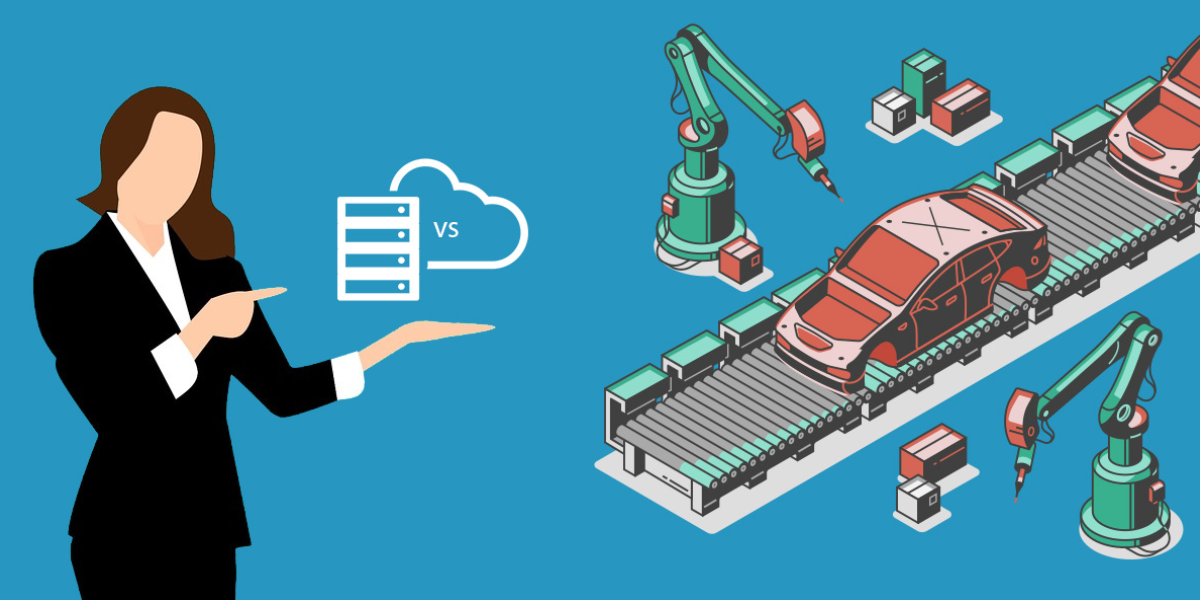
Cloud-Based ERP vs. On-Premise ERP For Small Manufacturing Business
- By Kalyani Chaudhari
- 05-02-2020
- ERP
Enterprise Resource Planning (ERP) is used to align company’s multiple departments to a single process. Various departmental activities can be collaborated through a unified platform for increased operational efficiency and higher profitability. ERP software helps companies manage their finance and accounting, supply chain and inventory, vendors and customers, multi-location commitments and resources. Additionally, ERP software can even be customized as per individual business needs.
ERP software can be deployed either On-Premise or On-Cloud. This is one of the most critical decisions companies will have to make while choosing the right ERP software. As compared to earlier times, Cloud ERP has become more familiar among many organizations. Yet, quite a few benefits associated with On-Premise ERP system makes it stand strong against On-Cloud deployment.
However, selecting weather to opt for Cloud-based Premise or On-Premise ERP, can evaluate the pros and cons of each setup and then match it with their present and future requirements. The Going further in this blog, we will shed some light on both deployments types to help you simplify your decision-making process.
The major difference between Cloud ERP and On-Premise ERP is that the first one is hosted on the vendor's server and accessed through browser. However, the latter is locally installed on the company's servers and systems.
On-Cloud ERP
While evaluating On-Cloud ERP, it is important to understand both the pros and cons associated with it. Let’s try to create a checklist one by one.
1. Cost – Since there are no hardware installments associated with this type of deployment, the upfront investment is relatively cheaper and also, the future investments are quite predictable. However, on the downside, if companies are unaware of their future growth plan, they might end up shelling even more throughout the system’s life cycle.
2. Security – This can be quite disturbing for a few companies if they don’t trust their vendors. The problem with this type of setup is that because the data security is the responsibility of vendors, companies might not have full control over it.
3. Customization – Although On-Cloud ERP is famous for lesser customization capabilities, it offers greater stability.
4. Implementation – The best part of deploying your data On-Cloud ERP is that it typically involves less time in implementation. This can help companies focus more on other important tasks.
On-Premise ERP
Like we saw the potential benefits and drawbacks of the On-Cloud ERP, let us also evaluate the same for On-Premise ERP.
When it comes to the costing part of On-Premise ERP, the upfront investment can be humongous. Since the hardware and IT is set up at the physical address, the cost incurred can spike enormously. However, unlike On-Cloud ERP, On-Premise ERP vests data security solely in the hands of the client. Therefore, companies can be completely relaxed about their security and therefore, can choose whichever protocols or practices they may find suitable. Additionally, On-Premise ERP offers a greater window for customization. But, as a result, this can result into extended implementation time and vendor communication cycles when it comes to updates and maintenance. Because the implementation process can take longer than expected, the major drawback involved with this type of setup is that it demands more money, resources and time as opposed to On-Cloud ERP setups.
Conclusion
On-Cloud ERP involves vendor’s server to host data while in On-Premise ERP data is hosted locally within the company premises. While both the setups have their own set of benefits and drawbacks, companies should wisely make the decision by aligning the offering to their end goal. Find out best mobile app developer to make your business online.
Recent blog

Crafting Eye-Catching Instagram Reels In Just 9 Easy Steps
Social Media | 25-04-2024.png)
Boost Sales and Conversions with Shopify's New AI-Powered Semantic Search
E-commerce | 24-04-2024




